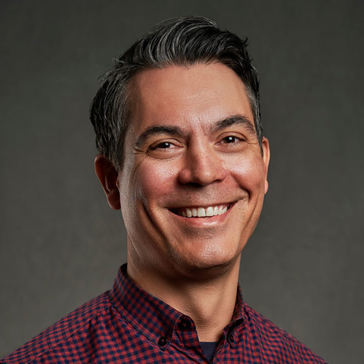June 10, 2021
Pride Month is an opportunity to celebrate the diversity within our community. At Education First, it’s also a time to reflect on the experiences of LGBTQIA+ students in public education, and the ways we can support them in our work. For this blog post, we’ve compiled research and resources that policymakers and educators can use to support LGBTQIA+ students throughout the year, not just in June. We hope this post serves as a small reminder of the beauty, strengths and brilliance that LGBTQIA+ students bring to all our lives.
What do LGBTQIA+ students experience in schools?
While LGBTQIA+ individuals have gained significant civil rights victories in the past two decades, many LGBTQIA+ students continue to face challenges in schools.¹
- Social-Emotional Well-Being & Mental Health: LGBTQIA+ youth report disproportionately high rates of experiencing symptoms of depression, considering attempting suicide and/or feeling unsafe or distressed at school.
- Verbal & Physical Harm: LGBTQIA+ youth report disproportionately high rates of verbal or physical harassment at school based on their sexual orientation, gender expression and/or gender identity.
- District & School Policies: LGBTQIA+ youth report disproportionately high rates of experiencing LGBTQ-related discrimination, such as policies or practices at school that prohibit them from using the bathroom or locker room that aligns with their gender identity.
- State Policies²: As of 2021, 27 states have no school nondiscrimination laws protecting LGBTQIA+ students, 26 states have no anti-bullying laws protecting LGBTQIA+ students and 25 states have no laws protecting LGBTQIA+ students from conversion therapy. Additionally, in 2021 at least 22 states have considered legislation that bans healthcare providers from providing hormone-related medical care for transgender youth.
What policies and practices support LGBTQIA+ students?
Some states and districts have a track record of implementing inclusive policies and practices that protect LGBTQIA+ students and positively shape their school experiences.³
- State Policies⁴: Several states have adopted nondiscrimination and anti-bullying laws to protect LGBTQIA+ students. For example, Nevada state legislation explicitly prohibits discrimination against students on the basis of sexual orientation and gender identity with specific language around the treatment of transgender, nonbinary and gender nonconforming students.
- District & School Policies⁴: Several districts and schools have adopted policies that protect LGBTQIA+ students such as restorative justice policies and equal access policies for transgender and nonbinary students to access school facilities and activities. For example, Los Angeles Unified School District’s (LAUSD) nondiscrimination policy explicitly protects students on the basis of sexual orientation, gender identity and gender expression. Furthermore, LAUSD’s Office of Human Relations, Diversity and Equity offers relevant technical and educational supports to schools and students, including the “OUT for Safe Schools” initiative and an LGBTQIA+ inclusive curriculum.
- Social Support⁵: Research shows that support from families, teachers and peers lead to better academic outcomes and more positive social and emotional well-being for LGBTQIA+ youth. School-based staff can provide social support to LGBTQIA+ students by forming positive relationships with LGBTQIA+ students and sponsoring Gender-Sexuality Alliances or Pride Clubs for students.
- Curriculum & Programming⁶: Research shows the academic, social and emotional, and public health value of including LGBTQIA+ representation in curriculum and teaching comprehensive sexual education.
- Professional Learning⁷: School districts have a role in providing teachers with effective and relevant professional learning opportunities. For example, several school districts offer professional learning about developing understandings of intersectional experiences of LGBTQIA+ students of color, building skills to address anti-LGBTQIA+ bias in one’s own practice and in the school environment, and learning how to implement trauma-informed and restorative justice practices.
How do LGBTQIA+ staff at Education First center LGBTQIA+ students in their work?
Here at Education First, we work with a wide range of clients across various topics in the education sector to create more people-focused, equitable and inclusive initiatives, strategies and organizations. As LGBTQIA+ staff at Education First, we hope that our past, current and future work will contribute to amplifying the strengths and needs of LGBTQIA+ students. Please read some of our personal reflections below.
- Chad Rubalcaba: In my past work at Education First, I’ve encouraged our foundation clients to invest in LGBTQIA+ students. For the past three years, for example, we’ve administered the SEL in Action Fund on behalf of the NoVo Foundation, which awards grants to classroom teachers and school districts for designing and implementing projects that promote the social, emotional and academic well-being of LGBTQIA+ students. You can read more about these projects here.
- Ellen Soyka: In my current work at Education First, I am centering LGBTQIA+ students by ensuring deliverable language includes expansive and inclusive language in terms of both gender and sexual orientation. This can include avoiding binary gendered language and asking as many questions as possible to make sure we’re not excluding or othering people. In addition, we can do this by clearly naming that LGBTQIA2S+ people are part of our work, making survey demographic questions expansive and including queer students as a group of students who face specific barriers that need to be named and removed.
- Amanda Perkins: In my current work at Education First, I am centering LGBTQIA+ staff who work in our client organizations by disaggregating TOP data (when sample sizes allow!) to uncover how they might be experiencing their organization differently than their peers. Our goal with this kind of analysis is to open up conversations about how to be more inclusive as an organization, and create more equitable experiences for our queer colleagues.
- Yeonjae Lee: In my future work at Education First, I hope to center LGBTQIA+ students by working with grassroots organizations, activists, funders, direct service providers and educators to amplify the warmth, humor and fabulous culture of our community at large and specifically the community of LGBTQIA+ people of color.


